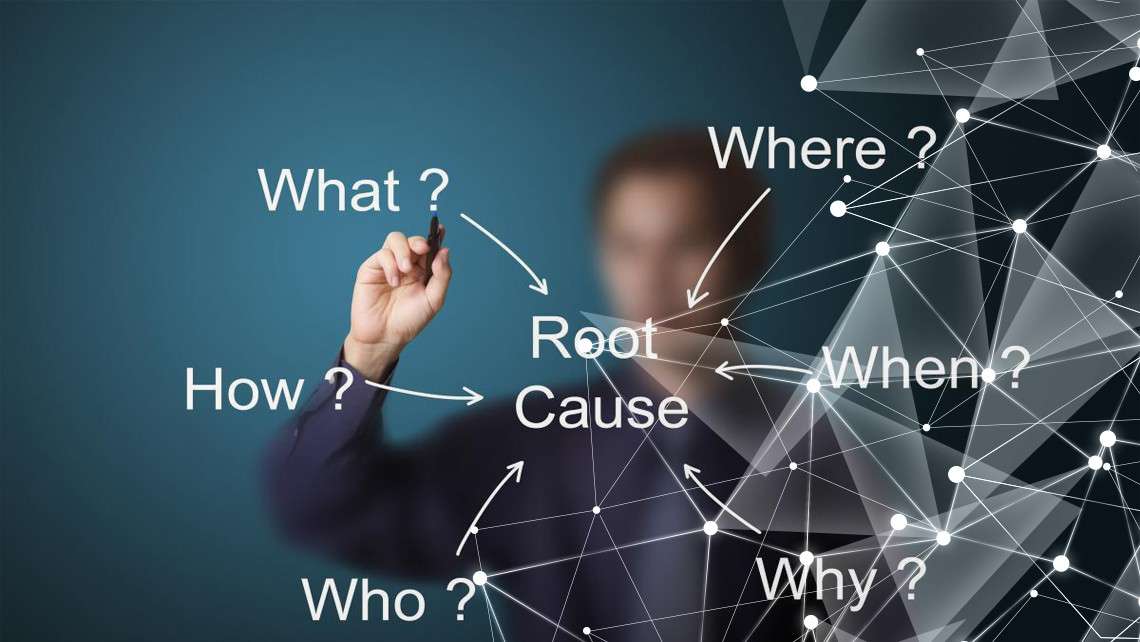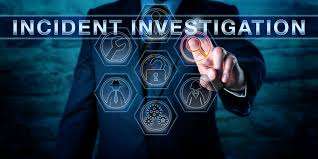How to conduct an accident and incident investigation and report writing
The aims of an investigation
Put simply, an investigation is a search for information. Information is usually obtained from people such as witnesses, informants and physical evidence in the form of documents, fingerprints, blood stains, shoe prints, tool marks and other trace evidence.
The investigation of an incident, like all other investigations, is initiated in order to solve a problem by finding the answers to a list of possible questions. These questions may consist of a number of, or all of, the following:
Who?
Who were the individuals involved in the particular incident being investigated? The names, addresses, and telephone numbers of all people are important.
What?
What is the real story of the incident? For example, what happened before, during, and after someone fell at a construction site?
Where?
The physical place of the incident and the movement of people and objects are important. For example, where exactly were witnesses and the patient when he/she fell?
When?
An idea of the time that particular activities took place during an incident is necessary for a thorough investigation. For example, it could be vital for paramedics to know how long the patient has been in an injured state, and that might help them to administer the correct medication and treatment.
How?
The focus of this question is on how the incident was able to take place in spite of health and safety measures. Where there indeed any health and safety measures in place at all? After an incident, investigators often attempt to find out how the incident could happen even though health and safety measures were in place. In the case of an industrial accident, investigators attempt to find out how the accident occurred while safety equipment was supposed to be in use.
Why?
This question can be difficult to answer. What was the cause of the incident? However, the answer can lead to the discovery of a pressing problem that may not have been so obvious. For example, numerous loss creating activities in a manufacturing plant may be brought about by low employee morale. In this case, theft and destruction of company property can be reduced by, for example, increasing management’s concern for employees through praise, a sports programme, bonuses, contests and good quality meals in the canteen.
Preservation of an incident scene
Investigators and health and safety officers often find themselves to be the first person at the scene of an incident. The primary purpose will be to conserve the scene of any incident in order to ensure that the collection of evidence from the scene is maximized. All evidence found at the scene will be produced in court or before a possible departmental enquiry. It is therefore of the utmost importance to conserve and preserve the scene to enable investigators to collect all evidence.
The investigator or health and safety officer who arrives at the incident scene must first obtain orderly control of the incident scene through his objective and rational conduct. He must make an evaluation of the situation, come to conclusions, identify places where valuable evidence could possibly be found, and attend to victims or patients of the incident.
It often happens that newspaper reporters or inquisitive persons gather at the incident scene. These persons do not go to an incident scene because their help is needed, but only out of curiosity. As a result of their interfering actions at the incident scene, valuable evidence could be destroyed. The incident scene then no longer has the same appearance as just after the incident, it has become contaminated, and it makes the task of the investigator or if necessary, police difficult.
In order to prevent the arising of such an unfortunate situation, the investigator in control of the incident scene must deny all unauthorised persons access to the incident scene. The only persons allowed on the scene are the authorised investigators and experts. He/she must, within the bounds of his powers and authority, act with absolute determination and decisiveness to keep unauthorised people out.
The foundation of success or failure is laid at the incident scene. The conduct of the investigator in control of the incident scene will, to a great extent, determine the outcome of the investigation.
The investigator’s next step will be to conserve all evidence in order to ensure proper administration of justice. The collection of such evidence involves a search for exhibits, clues and witnesses. This is done in an attempt to establish the cause of the incident, and should it go to court, prove the cause of the incident to the satisfaction of the court or where disciplinary action is to be taken, to the satisfaction of the committee.
To achieve this, there is only one starting point, namely, the scene of the incident. The scene of an incident is the place where direct or indirect proof of the cause of an incident exists. It is the place where evidence is found which can give clues to the nature of the incident and the cause of the incident.
No two scenes are exactly the same. The collection of evidence can only be done in a proper way if the approach to and handling at the scene of an incident, is conducted in an organised and objective way.
A member of the company who takes action at the scene of an incident, must know what is expected from his and must be familiar with the advantages of correct-, and the disadvantages of incorrect conduct. Any mistakes will hamper the investigation and prevent proper administration of corrective action.
Human elements like prejudice, imagination, untrained observation ability and defective memory, give rise to unreliable interpretations which make proper administration of corrective action difficult.
Clues which are destroyed or damaged can never be replaced. A court of law or health and safety committee can only base its findings on evidence and cannot construct a true image of the events if defects in the evidence exist. It is therefore necessary that the scene of an incident be visited as soon as possible, and it is the duty of the investigator who arrives at the scene first, to prevent the loss of clues, evidence and exhibits.
No hard and fast rules can be set for procedure at the scene. The investigator’s judgement will influence his conduct. Use the following questions to guide you at the scene of an incident:
Do I know what to do?
Do I know when to act?
Do I know how to act?
Are my actions within the law?
Are my actions within the law and yet desirable?
Will my conduct be beneficial or detrimental to the outcome of the investigation?
Will I perform my duties properly by acting in this manner?
Is my conduct impartial?
Do I have control over my emotions?
Does my behaviour promote good relations with the public?
Have I done everything possible to prevent further incidents / injuries, prevent further offences being committed, ensure that justice is done, ensure that my superiors and the public are satisfied with my conduct?
The degree of seriousness of an incident must not influence the approach to the investigation thereof. All investigations must be conducted completely and accurately.
Recording and investigation of incidents
The employer should keep record of all section 24 incidents and any other incident where medical treatment of first aid is involved. Records need to be kept for a period of at least three years.
The incident site may not be disturbed without the consent of an inspector in the case where a person:
Dies
Loss of limb or part of limb
Likely either to die
You may however:
Remove injured or dead
Rescue persons from danger
This shall not apply to:
Traffic accidents on a public road
Incident at a private household
Accidents according to the Aviation Act
The investigation should be performed by one of the following persons:
The employer or user of machinery
A person appointed by the employer to investigate the incident
The health and safety representative of the work area
A member of the health and safety committee
The investigation should officially start within a period of 7 days and be finalised as soon as possible as is reasonably practicable, or within the contracted period in the case of contracted workers.
How to conduct accident and incident investigation and report writing
16th Jan
Posted date: 16th Jan 2019
Inspections - Injuries on Duty (IODs) - Health and Safety Training - Workmans Compensation - Security Industry - Educational Services Industry - Food Drinks and Tobacco Industry - Wood and Upholstery Industry - Printing and Paper Industry - Chemical Rubber Oil and Paint Industry - Iron Steel Artificial Limbs Galvanizing Garages and Metals Industry - Trade and Commerce Industry - Banking and Insurance Industry - Airline Aviation Industry - Road Transport Hauliers Industry - Entertainment and Sport Industry - Professional Services Hospitality Industry - Charitable Religion Political and Trade Organisations Industry - Glass Brick Tiles and Concrete Industry 
Comments (1)
I am interested in doing the incident accident investigation corse i would like to do it with your institution.what are the prices and dates of attendance
2020-10-14 08:55:48